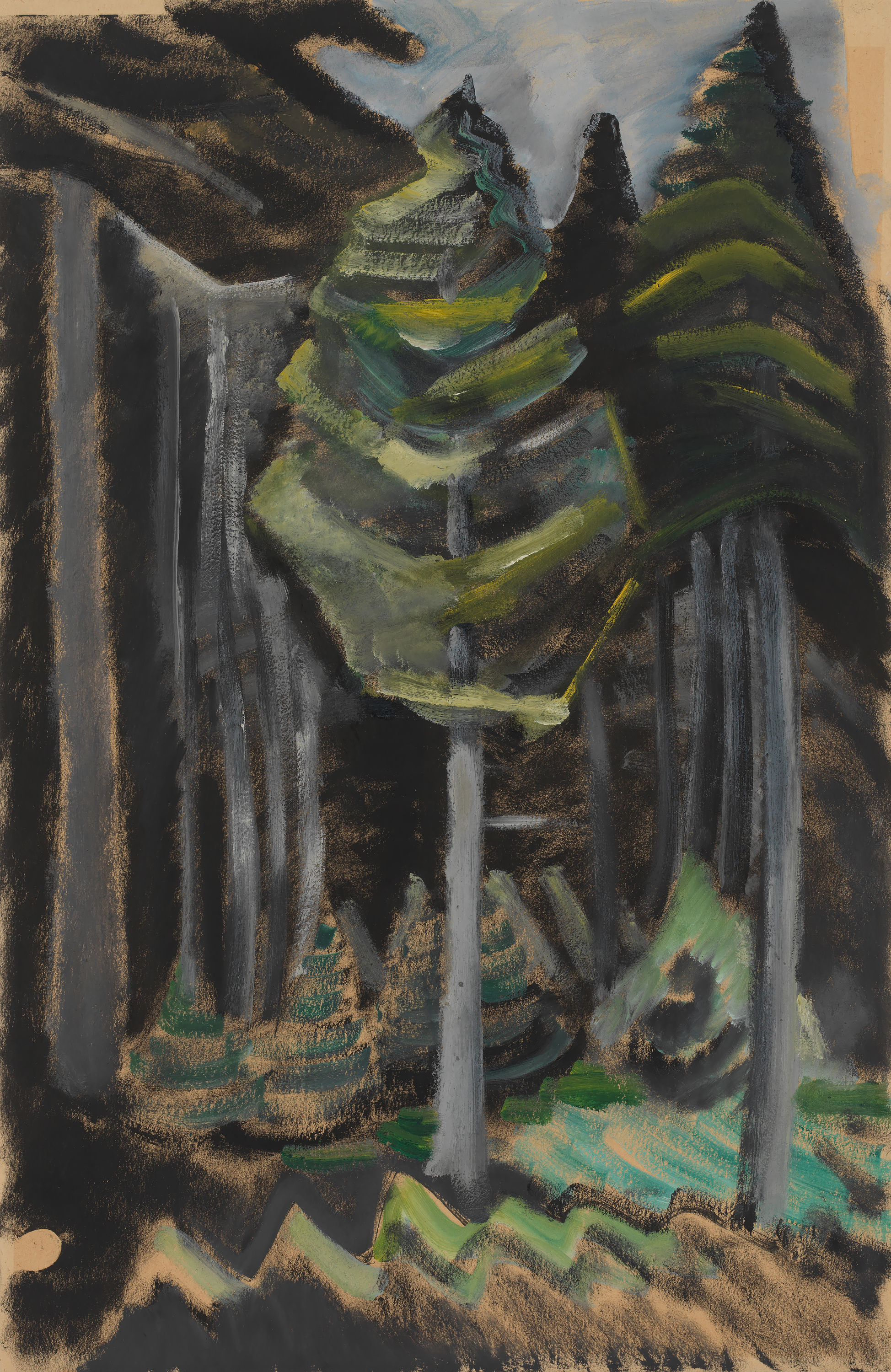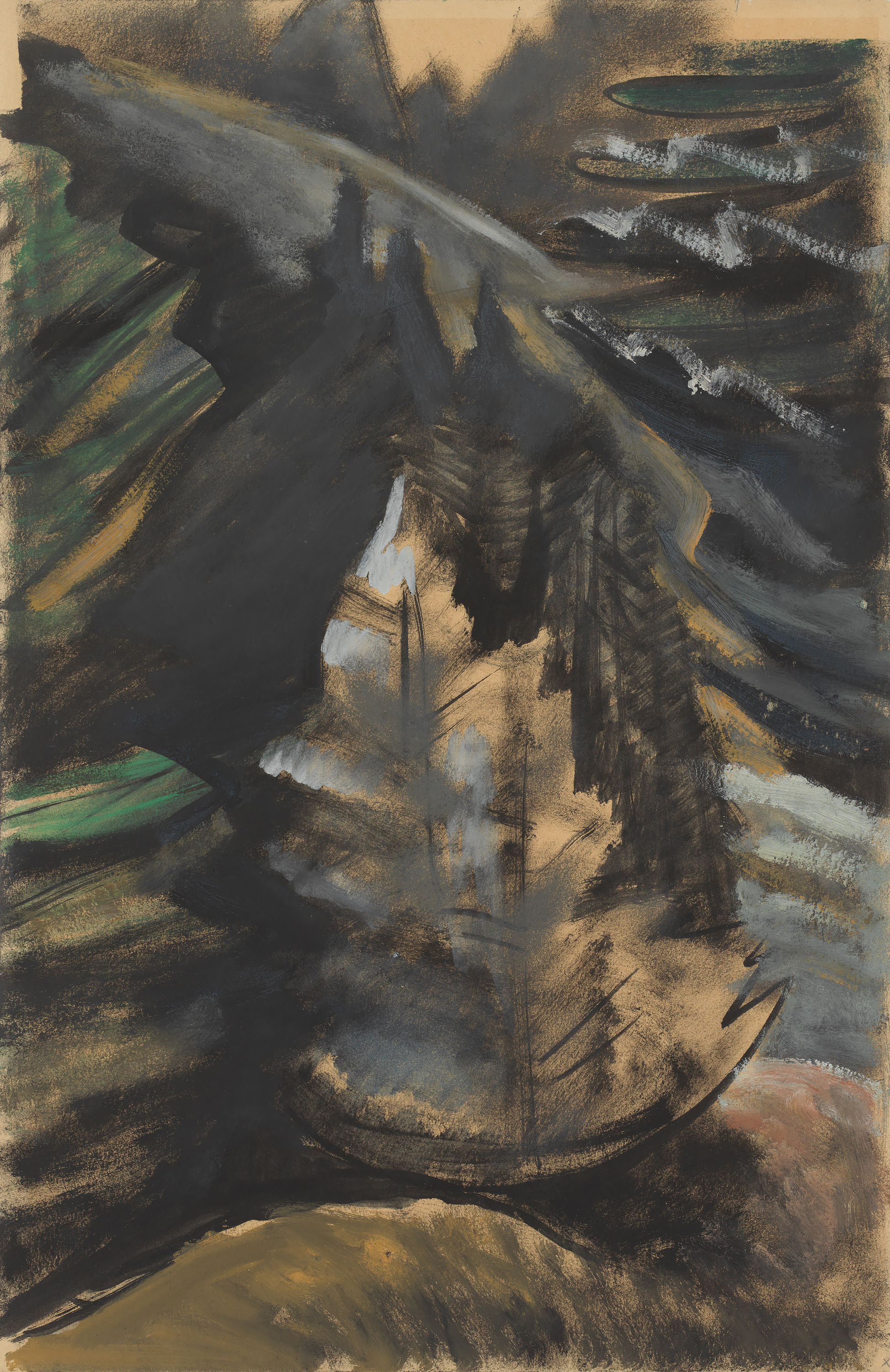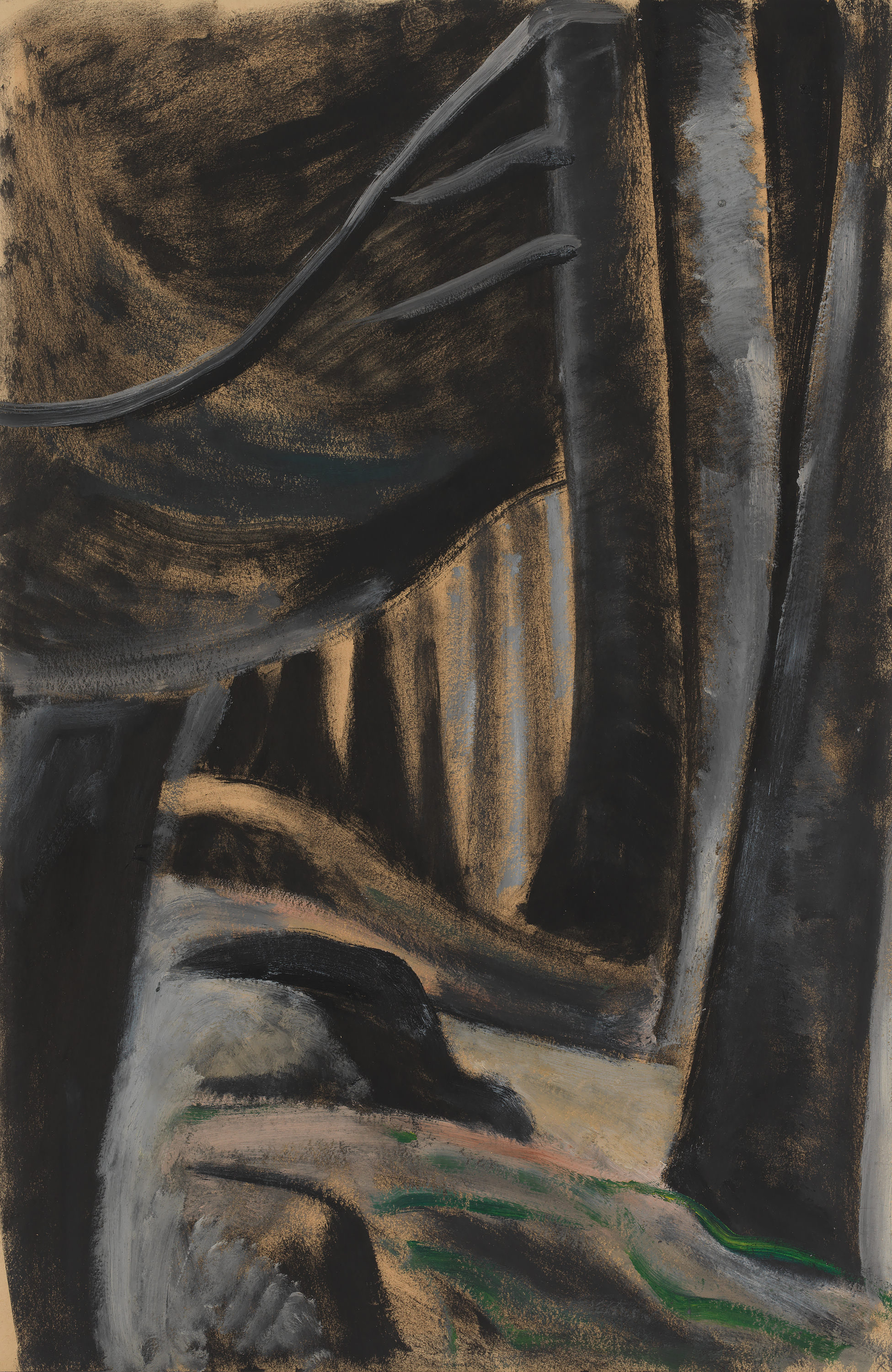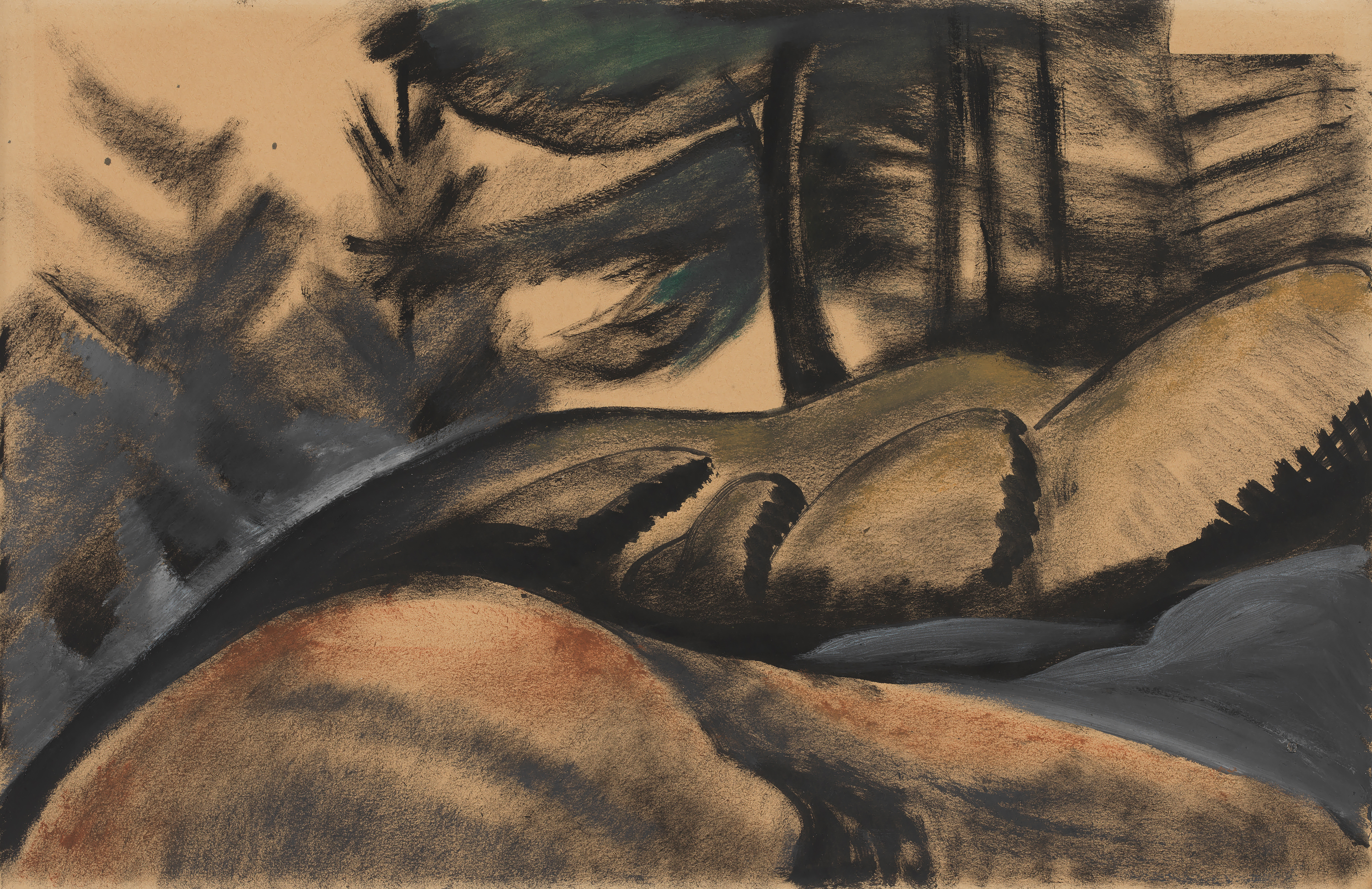Throughout her career, Emily Carr often used charcoal and graphite on paper to quickly capture a subject, or to experiment with form and composition. This allowed her to set aside the complications of colour and to focus on the fundamental shapes and rhythms that defined her subjects. In the 1930s, when Carr added gasoline-thinned oil paints and white house paint to her charcoal drawings, she invented an exciting new medium that combined the dry, muted qualities of charcoal and the expressive fluidity of paint. The results are uniquely compelling. The forest is alive with an energy that emanates from within the land, the trees and the sky and is transmitted directly through the brush to the paper.
To gain freedom I saw I must use broad surfaces, not stint material nor space… I brought cheap paper by the quire. Carrying a light, folding cedar-wood drawing board, a bottle of gasoline, large bristle brushes and oil paints, I spent all the time I could in the woods. (Emily Carr, late 1930s)




